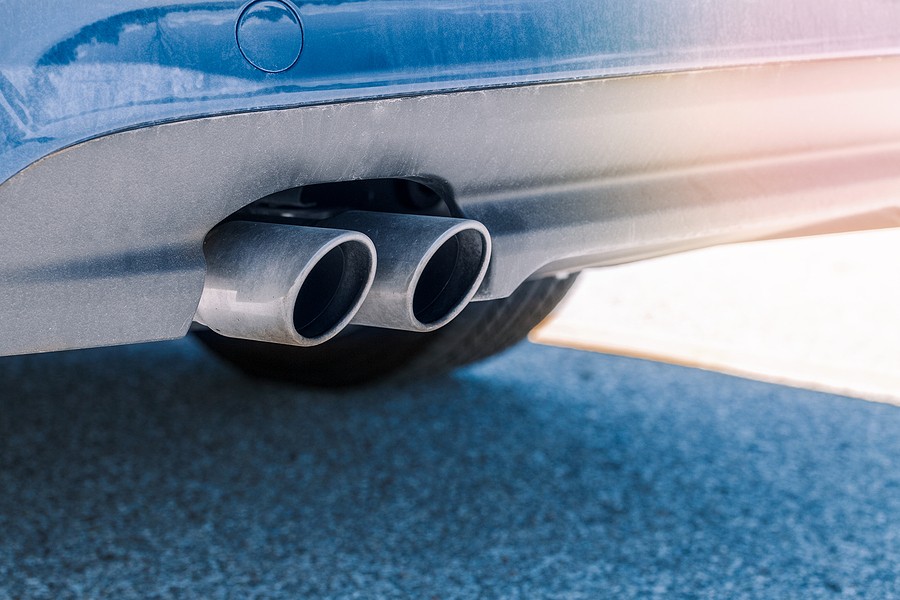As a car owner, your job is to have a working vehicle at all times. So, when problems arise such as an exhaust leak, it’s not only to your benefit to know what it is, but to have a plan to remedy it. In this post, we’ll examine what an exhaust leak is, and offer practical ways you can get the issue fixed.
What Is an Exhaust Leak & How Does It Affect My Car’s Performance?
An exhaust leak is a condition in which several of the exhaust gases created inside of your engine's combustion chamber, seep out your vehicle's exhaust system- before they reach your vehicle’s tailpipe.
In a good working vehicle, the exhaust gases are indeed expelled out the tailpipe. But there are some instances in which some of the gases will seep out, before they reach the tailpipe. Once the exhaust gases leak between the engine's tailpipe and combustion chamber, you have an “exhaust leak.”
Why Are Exhaust Leaks A Problem?
Exhaust leaks are problematic for lots of reasons. The first reason that an exhaust leak is an issue, is because the leak can put your car’s sensors out of whack. Those unresponsive or faulty sensors can cause your engine to burn too little or too much fuel. The second reason that exhaust leaks are problematic, is the fact that the compromise the vitality of our environment. Think about it. An exhaust leak releases exhaust gases before those gases have the ability to travel through your vehicle’s catalytic converter. So, you run the risk of polluting the air that you and others breathe with an exhaust leak.
What Are Some Of The Most Common Signs Of An Exhaust Leak?
There are several “red flags” you want to be aware of, when it comes to an exhaust leak. The most common signs include:
Loud Noises When You Start Your Engine
Once you crank up your vehicle’s engine, you may hear an unusually loud noise that is coming from your engine. This is a sign that you have an exhaust leak. In fact, this may be a sign that you have an exhaust manifold gasket leak. Keep in mind that the gasket sits in between the engine block and the piping of the exhaust manifold. This gasket is continually cooled and heated. So, if you are not able to see any visible crack or fracture that is coming from the piping, then you may need to check the gasket and see if there is a problem there.
Your Gas Pedal Vibrates
Anytime you have a leak in your vehicle, your vehicle is more prone to vibrate. If you have a large leak, then you can count on the vibration to be bigger and more noticeable. The vibrations will always begin in the gas pedal of your vehicle. If you choose to ignore your vibrating your gas pedal, then you will begin to feel your steering wheel vibrate as well. Your vehicle’s floorboards will begin to vibrate due to the leak too.
Poor Fuel Economy/Efficiency
Are you noticing that your car requires a lot more fill ups at the local gas station? This could be due to an exhaust leak that has not been taken care of. The leaks make it far more difficult for your engine to perform at optimal performance. With the exhaust leaks and the poor engine performance, you will experience poor fuel efficiency.
Unusual Noises When You Put Your Foot On the Gas
If you have an exhaust leak, then you may experience loud and unusual noises as you place your foot on your gas pedal. Not only will that gas pedal vibrate, but it can become aggravatingly loud. Test this by putting your foot on the gas pedal and check to hear any noises that just don’t sound right. Do you hear noises that sound as if there is air coming out? Do you even hear whistling noise? Then you certainly have an issue here. For many car owners, it is difficult to hear the difference in noises. For example, you may not be able to tell the difference between a sound that indicates you have a vacuum leak, or even an exhaust leak. But you can surely take your car to a mechanic for any strange engine noises, so that you can get a proper diagnosis of the situation.
Your Check Engine Light Comes On
Your “Check Engine Light” comes on for a variety of reasons- and an exhaust leak is one of them. While your check engine light illuminating on your dash may indicate that you have an exhaust leak, you want to waste no time getting it checked out.
That check engine light may also indicate that there are other issues that are coupled with your exhaust leak. Lots of times, there will be an exhaust leak, but there may be an underlying problem or an additional issue that needs attention, ASAP. You may have an exhaust leak coupled with a faulty oxygen sensor, causing your catalytic converter to fail.
An Unusual Smell
Another sign that you have an exhaust leak, is an unusual smell. You may be smelling something that mirrors that of “rotten eggs”. That is a sulfur-like smell, that may be a sign that your catalytic converter is weakening. Since your catalytic converter is part of your vehicle’s anti-pollution system, it is to your benefit to get it checked. As you know, your catalytic converter converts harmful byproducts of combustion into ones that are less dangerous.
Is It OK To Drive A Car With An Exhaust Leak?
Your vehicle’s exhaust system is a very important system that should always stay intact. Your car’s exhaust system has the job of keeping the car quiet as well as keeping any exhaust fumes away from the cabin or the inside of your car. Additionally, your vehicle’s exhaust system allows for your engine to run properly while helping to reduce emissions. Your exhaust system also provides great fuel efficiency for you. So, to answer the question of, “is it OK to drive around with an exhaust leak?” the answer is “absolutely not”. The fumes from the exhaust leak contain carbon monoxide- which is dangerous.
How Do I Find An Exhaust Leak?
Finding an exhaust leak can be a hard task. You certainly don’t want to be in a hurry. Furthermore, you certainly don’t want to hunt for the leak while the exhaust pipe can become hot. You should never handle or touch any part of your exhaust system if you have driven your vehicle in the last three or four hours. Your car needs a good amount of time to cool off. As you look for your exhaust leak, you can begin with looking for it visually. Begin with opening the hood of your vehicle and locate your exhaust manifold. It will be where the exhaust gases leave your vehicle’s engine. Chances are it will have a rusty look to it too. You’ll also see either one large tube, or several tubes.
Many times, the tube or tubes have a heat shield over them. So, you may have to spend a bit of time looking. Afterward, you can follow the piping that is under your vehicle, and allow it to lead you to the back or rear of your vehicle.
Check for any fractures, cracks or holes. Don’t forget to look at all of your exhaust components too. For example, you may need to give your catalytic converter, muffler and resonator- a thorough visual inspection. Check all components for fractures, cracks, holes or deformities. Then, be sure that you look at the top of each of the components, with your mechanic mirror.
Can I Fix My Own Exhaust Leak?
You can certainly repair an exhaust leak on our own. In fact, you can successfully patch an exhaust leak- but you have to know what you are doing. So, if you don’t, leave the repair to a professional.
The methods of repairing an exhaust leak will vary, depending on the size of the leak or the holes. You can use an exhaust patch to fix any tiny punctures. You can use an aluminum patch for the bigger ones.
Take a steel brush so that you can scrub the area surrounding the leak. Make sure that you clean it thoroughly so that you have no dirt, mud or rust in the area. Then get some sandpaper and smooth the surface. Next, take some acetone, and then spray or place that acetone on the scrubbed area-so that it is clean. The acetone will allow for better adhesion or sticking power from the tape, as you patch the hole. If your exhaust leak is small, you can use tape, or even epoxy. Make sure that follow all directions for application. You may even need to place two layers of the tape for a stronger, bond and wrap.
Is your exhaust leak larger? Then you will need to use aluminum patches for a successful fix. if you have an extremely large hole, then you will need to replace the car part. Even if you are using an aluminum patch, you will still need to carefully apply epoxy before placing the aluminum patch over the leaking area. You can also use hose clamps to secure the patch around the exhaust pipe. Regardless of the size of your exhaust leak, you want to remember that safety must come first. So, be sure that you use safety glasses, gloves and other safety equipment for the repair.
What Other Articles Can I Read That Are Related To The Exhaust Leak I Have?
Check out related content that you can read about exhaust leaks. Click the title below, to gather more insight and information that can help you now!



